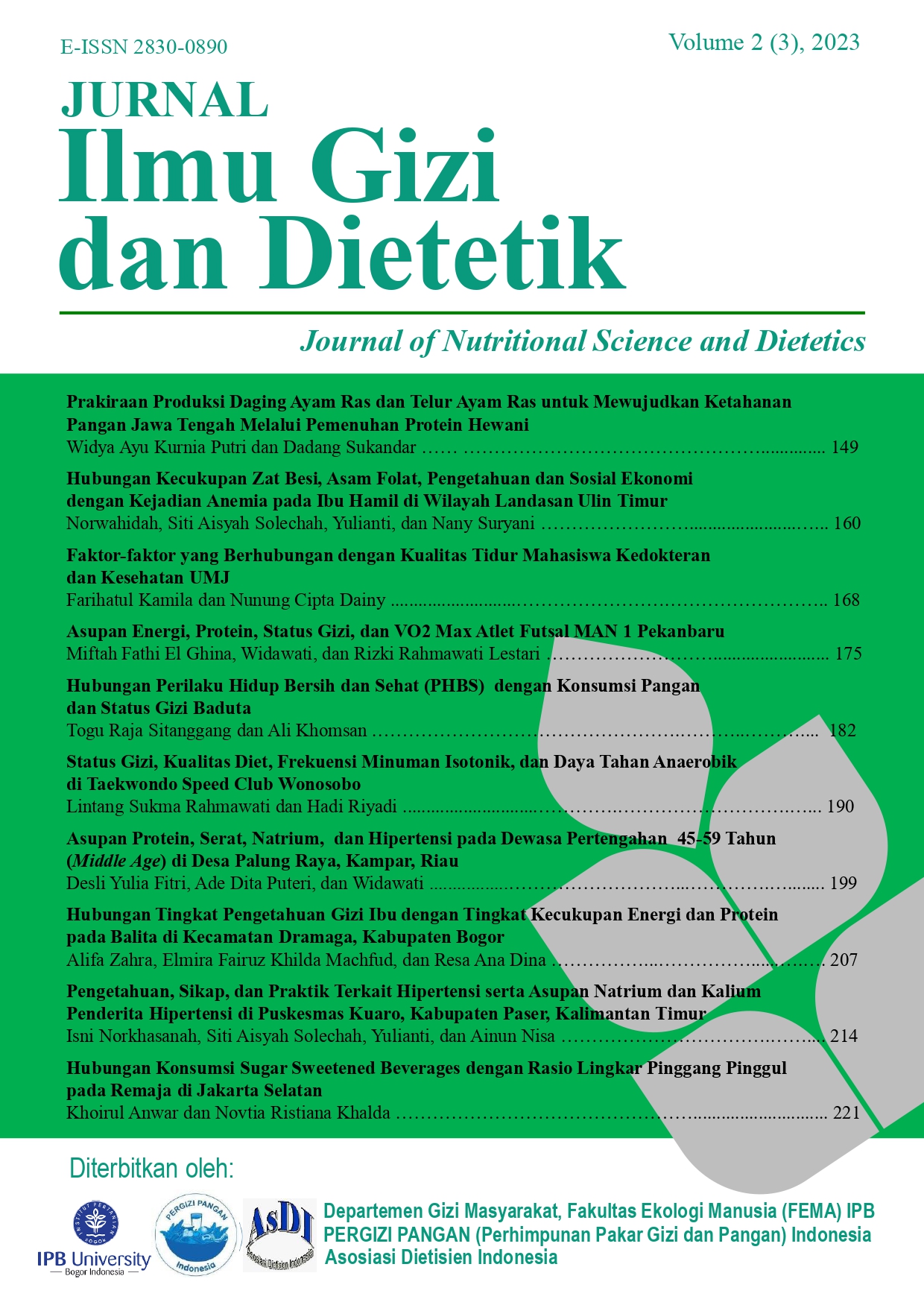Hubungan Perilaku Hidup Bersih dan Sehat (PHBS) dengan Konsumsi Pangan dan Status Gizi Baduta Correlation between the Mother’s Clean and Healthy Behavior with Food Consumption and the Nutritional Status of Children Under Two Years Old
Abstract
This study aims to analyze knowledge, attitudes, and PHBS practices and their relationship with food consumption and the nutritional status of under-twos. The research design used was cross-sectional, with a total of 66 children. The majority of mothers under two had good knowledge, attitudes, and PHBS practices (87.9%, 86.4%, and 63.6%). As many as 39.4% of mothers under two have a good perception of their home environment, while most others (60.6%) have a moderate perception of their home environment (60-79%). The level of energy adequacy (84.6% RDA) is classified as less than the recommended 100-<130% RDA, protein (193.2% RDA) and fat (158% RDA) are classified as more than the recommended 100-<130% RDA, and carbohydrates (115.6% RDA) for children under five are in accordance with the recommendation of 100-<130% RDA. The indicators Ever Breastfed (EvBF), Minimum Dietary Diversity (MMD), and Minimum Meal Frequency (MMF) in children have met the standards of Infant and Young Child Feeding (IYCF) practices by WHO and UNICEF (2021). The majority of subjects (84.8%) had normal nutritional status. The results of the Rank Spearman Correlation test showed that there was a significant relationship between PHBS knowledge and PHBS attitudes (p<0.05). The results of the relationship test showed that there was no significant relationship between the consumption of breast milk, complementary foods and the nutritional status of under-fives, knowledge, attitudes, and PHBS practices and the nutritional status of under-twos

